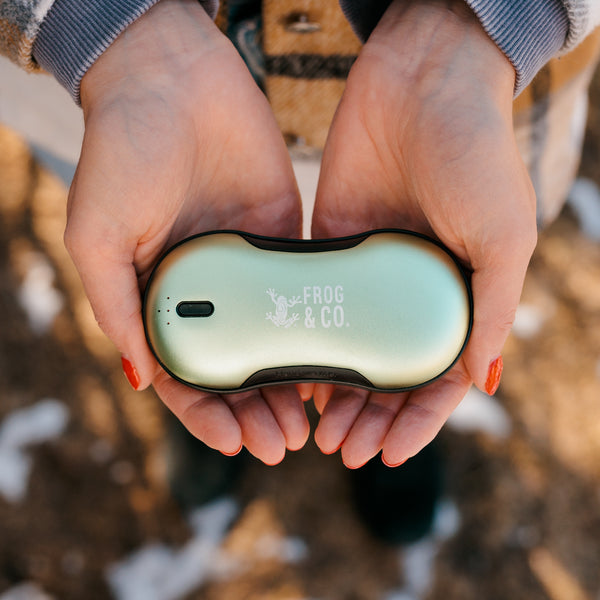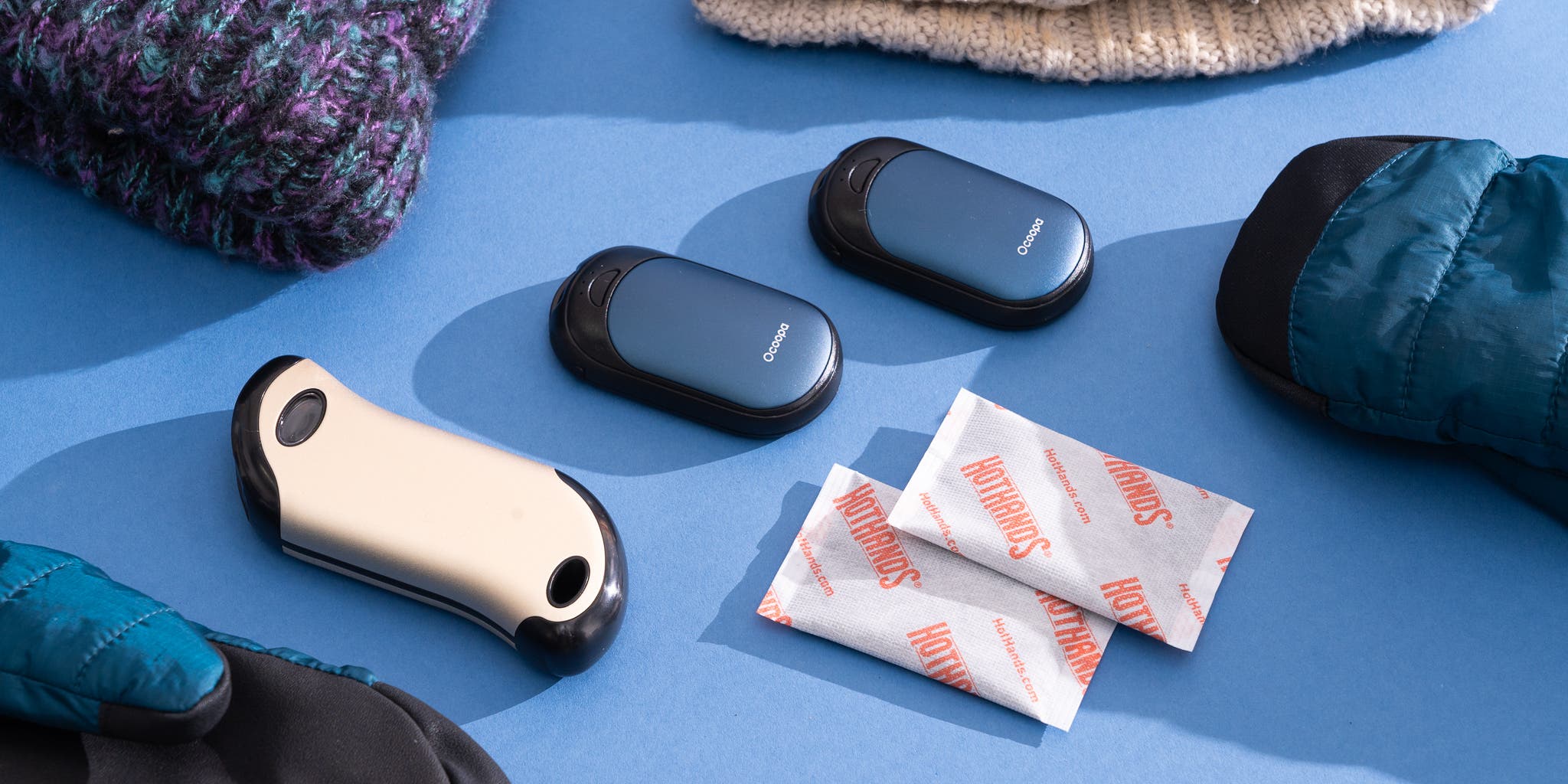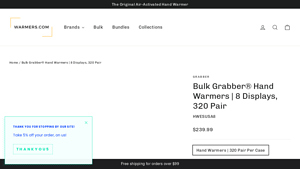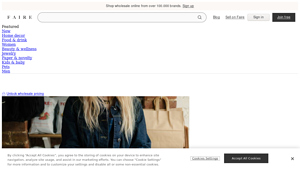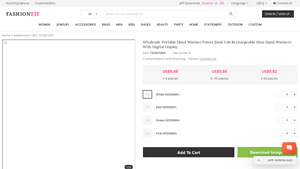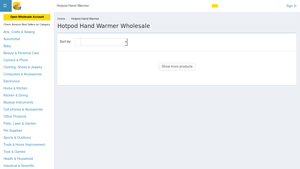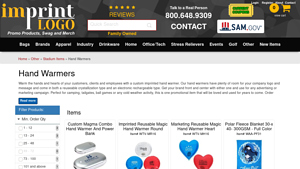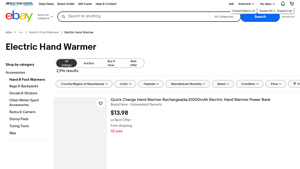A Deep Dive into Bulk Rechargeable Hand Warmers Solution
Introduction: Navigating the Global Market for bulk rechargeable hand warmers
In an increasingly competitive global market, sourcing bulk rechargeable hand warmers poses unique challenges for B2B buyers, especially those operating in colder climates or catering to outdoor enthusiasts. The demand for reliable, eco-friendly heating solutions is on the rise, driven by growing interest in winter sports, outdoor activities, and workplace safety. This comprehensive guide aims to illuminate the various types of rechargeable hand warmers available, their applications across different industries, and the essential considerations for supplier vetting, pricing structures, and logistical challenges.
As international buyers from Africa, South America, the Middle East, and Europe, including Germany and Vietnam, navigate this evolving landscape, understanding the nuances of the hand warmer market becomes crucial. This guide empowers decision-makers by providing actionable insights into product specifications, durability, and environmental impact, ensuring that every purchase aligns with their operational needs and sustainability goals. Additionally, we delve into the latest innovations in rechargeable technology and eco-friendly materials that not only enhance user experience but also position businesses as leaders in responsible sourcing.
By leveraging the knowledge contained within this guide, B2B buyers can make informed decisions that not only meet their immediate requirements but also contribute to long-term success in a market that continues to grow and evolve.
Understanding bulk rechargeable hand warmers Types and Variations
| Type Name | Key Distinguishing Features | Primary B2B Applications | Brief Pros & Cons for Buyers |
|---|---|---|---|
| Battery-Powered | Rechargeable, often via USB; adjustable heat settings; portable. | Outdoor events, construction sites, sports. | Pros: Reusable, adjustable heat, long-lasting; Cons: Requires charging, initial cost can be higher. |
| Air-Activated | Disposable, natural ingredients; heats up within 15-30 minutes. | Cold weather events, emergency kits. | Pros: No charging needed, environmentally safe; Cons: Single-use, limited duration. |
| Petroleum Naphtha | Reusable with fuel; operates via combustion; fabric casing. | Outdoor enthusiasts, camping, hunting. | Pros: Long-lasting heat, reusable; Cons: Requires refueling, potential safety concerns with fuel. |
| Crystallization | Rechargeable by boiling in water; generates heat through crystallization. | Recreational activities, personal use. | Pros: Reusable, eco-friendly; Cons: Time-consuming to recharge, limited heat duration. |
| Charcoal | Uses charcoal for heat; generally lasts up to six hours. | Outdoor events, cold weather jobs. | Pros: Affordable, reusable; Cons: Requires maintenance, less portable than other types. |
What Are the Key Characteristics of Battery-Powered Hand Warmers?
Battery-powered hand warmers are designed for convenience and versatility. They typically feature rechargeable batteries that can be powered via USB, allowing for easy charging on the go. Many models offer adjustable heat settings, which can be beneficial for users needing specific warmth levels. These hand warmers are ideal for B2B applications in outdoor events, construction sites, and sports, where reliable and consistent warmth is necessary. When purchasing, businesses should consider the battery life, heat output options, and the number of recharge cycles to ensure longevity and value.
How Do Air-Activated Hand Warmers Function?
Air-activated hand warmers are disposable products that generate heat through a natural chemical reaction involving iron and other ingredients when exposed to air. They typically heat up within 15-30 minutes and can last for up to 10 hours, making them suitable for cold weather events and emergency kits. For B2B buyers, these warmers offer a hassle-free solution as they don’t require charging and are safe for the environment. However, they are single-use, which means businesses should assess the balance between convenience and sustainability when considering bulk purchases.
What Makes Petroleum Naphtha Hand Warmers Unique?
Petroleum naphtha hand warmers utilize a combustible fuel to generate heat and are typically housed in a fabric bag. They are reusable, requiring users to refill the fuel after use. This type of hand warmer is particularly suitable for outdoor enthusiasts, campers, and hunters who need reliable warmth over extended periods. B2B buyers should weigh the benefits of long-lasting heat against the need for safety precautions when handling fuel, as well as the practicality of refueling in various environments.
What Are the Advantages of Crystallization Hand Warmers?
Crystallization hand warmers operate by immersing them in hot water to recharge, allowing them to generate heat through a crystallization process when activated. These warmers are reusable and environmentally friendly, making them appealing for personal and recreational use. For B2B buyers, they offer a sustainable option, but the recharge process can be time-consuming, which may not suit all business needs. Companies should evaluate the practicality of this option based on their specific use cases and the availability of hot water for recharging.
Why Choose Charcoal Hand Warmers?
Charcoal hand warmers generate heat by burning charcoal and are typically housed in a felt case. They can provide warmth for up to six hours and are often favored for outdoor events and cold weather jobs due to their affordability and reusability. However, they require maintenance and can be less portable compared to other types. B2B buyers must consider the balance between cost-effectiveness and practicality, especially in environments where ease of use is a priority.
Key Industrial Applications of bulk rechargeable hand warmers
| Industry/Sector | Specific Application of bulk rechargeable hand warmers | Value/Benefit for the Business | Key Sourcing Considerations for this Application |
|---|---|---|---|
| Outdoor Recreation | Used in camping and hiking events to keep participants warm | Enhances user comfort, encouraging participation and loyalty | Durability, heat duration, and portability |
| Construction | Provides warmth to workers on-site in cold conditions | Increases worker productivity and safety during cold weather | Recharge time, battery life, and safety certifications |
| Emergency Services | Distributed to first responders in cold weather emergencies | Ensures personnel remain warm, enhancing response efficiency | Quick recharge capabilities and rugged design |
| Sports and Events | Distributed at outdoor sporting events for players and spectators | Improves overall experience, leading to higher attendance | Bulk pricing, delivery times, and branding options |
| Hospitality & Tourism | Offered as amenities in hotels or ski resorts during winter | Enhances guest experience, attracting more customers | Aesthetic design, recharge options, and bulk availability |
How Are Bulk Rechargeable Hand Warmers Utilized in Outdoor Recreation?
In the outdoor recreation sector, bulk rechargeable hand warmers are essential for camping and hiking events, particularly in colder climates. They provide participants with reliable warmth, improving comfort and enjoyment during activities. This is crucial for maintaining high participation rates and fostering loyalty among outdoor enthusiasts. For B2B buyers in this sector, considerations include the durability of the warmers, the duration of heat they provide, and their portability, ensuring they can be easily packed and transported.
What Role Do Rechargeable Hand Warmers Play in Construction?
In the construction industry, bulk rechargeable hand warmers are used to keep workers warm during cold weather, significantly enhancing productivity and safety. By ensuring that workers remain comfortable, these devices help reduce the risk of cold-related illnesses and accidents, which can lead to costly downtime. Buyers must evaluate recharge times, battery life, and safety certifications when sourcing these products, as they need to withstand harsh working conditions while remaining effective.
How Do Emergency Services Benefit from Bulk Rechargeable Hand Warmers?
Emergency services utilize bulk rechargeable hand warmers to equip first responders during cold weather emergencies. These warmers ensure that personnel can operate efficiently and effectively, even in extreme conditions. The ability to quickly recharge these devices is vital, as is their rugged design, which must withstand the rigors of emergency situations. Buyers in this sector should prioritize quick recharge capabilities and robust construction to ensure reliability in urgent scenarios.
Why Are Hand Warmers Important for Sports and Events?
At outdoor sporting events, bulk rechargeable hand warmers are distributed to both players and spectators, enhancing the overall experience. By providing warmth, these devices help maintain comfort levels, which can lead to increased attendance and customer satisfaction. For B2B buyers in this sector, factors such as bulk pricing, delivery times, and branding options are essential. Ensuring that warmers can be easily branded or customized can also enhance the event’s promotional efforts.
How Do Hospitality and Tourism Industries Utilize Hand Warmers?
In the hospitality and tourism industries, bulk rechargeable hand warmers are offered as amenities in hotels, resorts, and during winter activities like skiing. They enhance the guest experience by providing comfort in cold weather, which can be a significant selling point for establishments in colder regions. Buyers need to consider the aesthetic design, recharge options, and bulk availability of these warmers to align with their brand image and operational needs effectively.
3 Common User Pain Points for ‘bulk rechargeable hand warmers’ & Their Solutions
Scenario 1: Navigating Supply Chain Challenges for Bulk Hand Warmers
The Problem: International B2B buyers often face difficulties in sourcing bulk rechargeable hand warmers due to inconsistent supply chains, especially when dealing with suppliers from different regions. This challenge can be exacerbated by geopolitical factors, logistical delays, or fluctuating market demands, leading to potential stock shortages during peak cold weather months. Buyers need reliable access to products to meet their customers’ demands, which can be challenging when suppliers are unable to deliver on time or maintain consistent product quality.
The Solution: To mitigate supply chain issues, B2B buyers should establish relationships with multiple suppliers across different regions to diversify their sourcing options. This strategy not only ensures a steady supply but also provides leverage in negotiating better prices and terms. Additionally, conducting thorough due diligence on suppliers by checking their certifications, production capacity, and past performance can help buyers identify reliable partners. It is advisable to negotiate contracts that include clear delivery timelines and quality assurances. Furthermore, maintaining a buffer stock during the off-peak season can help businesses manage unexpected demand spikes without disruptions.
Scenario 2: Ensuring Product Quality and Safety Compliance
The Problem: When purchasing bulk rechargeable hand warmers, B2B buyers often encounter concerns regarding product quality and safety compliance. Inconsistent manufacturing standards can lead to products that do not meet regulatory requirements, which poses risks to the end-users and can lead to costly recalls or liability issues. This is particularly critical for industries such as construction or outdoor events, where safety is paramount.
The Solution: Buyers should prioritize sourcing rechargeable hand warmers from manufacturers that adhere to international safety and quality standards, such as ISO certifications or CE markings. Conducting pre-shipment inspections can also help ensure that the products meet the required specifications before they are dispatched. It is beneficial to request samples for testing before placing a bulk order, allowing buyers to assess the product’s performance and safety features. Additionally, developing a comprehensive quality assurance process that includes regular audits of suppliers can help maintain high standards and reduce risks associated with product quality.
Scenario 3: Managing Diverse User Needs in Various Markets
The Problem: B2B buyers catering to diverse markets face the challenge of meeting varied user preferences and needs when it comes to rechargeable hand warmers. Different regions may have specific requirements regarding size, heat output, charging methods, or even sustainability features. Understanding these differences is crucial for businesses to offer products that resonate with their target audience.
The Solution: To effectively address this challenge, buyers should conduct market research to identify the unique needs and preferences of their customers in different regions. Engaging with local distributors and retailers can provide valuable insights into consumer behavior and trends. Based on this information, buyers can curate a product selection that includes a range of rechargeable hand warmer options tailored to specific markets. For instance, offering compact models for urban consumers and larger, higher-capacity units for outdoor enthusiasts can cater to diverse segments. Furthermore, emphasizing eco-friendly features, such as recyclable materials or energy-efficient charging, can align with the growing demand for sustainable products. Providing educational resources about the benefits and usage of different models can also help end-users make informed decisions, enhancing customer satisfaction and loyalty.
Strategic Material Selection Guide for bulk rechargeable hand warmers
What Materials are Commonly Used in Bulk Rechargeable Hand Warmers?
When selecting materials for bulk rechargeable hand warmers, several options are prevalent in the industry. Each material has unique properties that affect performance, durability, and cost. Understanding these materials can help international B2B buyers make informed decisions that align with their needs and compliance standards.
What are the Key Properties of Aluminum in Rechargeable Hand Warmers?
Aluminum is often used for the casing of rechargeable hand warmers due to its lightweight and excellent thermal conductivity. It typically withstands temperatures up to 200°C and has good corrosion resistance, making it suitable for various environments. The ability to dissipate heat efficiently ensures that the hand warmer can maintain optimal operating temperatures.
Pros: Aluminum is durable and lightweight, which enhances portability. It is also relatively inexpensive and easy to manufacture, making it a popular choice for bulk production.
Cons: While aluminum is resistant to corrosion, it can be prone to scratching and denting, which may affect the aesthetic and functional integrity over time. Additionally, it may not be suitable for extreme conditions without additional protective coatings.
Impact on Application: Aluminum’s thermal properties make it ideal for quick heating applications, but it may not be suitable for environments with high humidity unless properly treated.
Considerations for International Buyers: Buyers should ensure compliance with international standards such as ASTM and DIN for safety and performance. In regions with high humidity, such as parts of Africa and South America, the choice of aluminum may require additional protective measures.
How Does Plastic Contribute to the Performance of Rechargeable Hand Warmers?
Plastic, particularly high-density polyethylene (HDPE) or polycarbonate, is commonly used for the internal components and casings of rechargeable hand warmers. These plastics can withstand temperatures up to 120°C and offer excellent impact resistance.
Pros: Plastic is lightweight and cost-effective, making it suitable for mass production. It also provides good insulation, which helps retain heat longer.
Cons: Plastics may not be as durable as metals and can degrade over time, especially when exposed to UV light or extreme temperatures. They may also not provide the same level of heat conduction as metals.
Impact on Application: The insulating properties of plastic can enhance the user experience by prolonging warmth, but its thermal limits may restrict performance in very cold environments.
Considerations for International Buyers: Buyers should be aware of the environmental regulations concerning plastic use, especially in Europe where there are stringent recycling and disposal standards.
What Role Does Lithium-Ion Play in Rechargeable Hand Warmers?
Lithium-ion batteries are the primary power source for rechargeable hand warmers. They are known for their high energy density, allowing for longer usage times and faster charging capabilities.
Pros: Lithium-ion batteries can provide consistent power over a long duration and can be recharged hundreds of times, making them cost-effective in the long run.
Cons: They can be sensitive to temperature extremes and may require protective circuitry to prevent overheating or failure. Additionally, they can be more expensive compared to other battery types.
Impact on Application: The efficiency of lithium-ion batteries makes them ideal for portable applications, but their performance can be compromised in extreme temperatures, which is a consideration for buyers in colder regions.
Considerations for International Buyers: Compliance with international safety standards (e.g., UN 38.3 for lithium batteries) is crucial, especially for shipments to regions with strict regulations like Europe.
How Does Steel Enhance the Durability of Rechargeable Hand Warmers?
Stainless steel is sometimes used for the outer casing of rechargeable hand warmers due to its strength and corrosion resistance. It can withstand high temperatures and is less likely to deform under pressure.
Pros: Stainless steel is highly durable and resistant to corrosion, making it suitable for rugged outdoor use. It also has a premium feel, which can enhance product appeal.
Cons: The cost of stainless steel is higher than aluminum or plastic, and its weight may be a disadvantage for portable applications.
Impact on Application: The robust nature of stainless steel allows it to perform well in harsh environments, but its weight may limit its use in lightweight designs.
Considerations for International Buyers: Buyers should consider the added cost of stainless steel in bulk orders and ensure compliance with international standards for metal safety and quality.
Summary Table of Material Selection for Bulk Rechargeable Hand Warmers
| Material | Typical Use Case for bulk rechargeable hand warmers | Key Advantage | Key Disadvantage/Limitation | Relative Cost (Low/Med/High) |
|---|---|---|---|---|
| Aluminum | Casing for lightweight hand warmers | Durable and lightweight | Prone to scratching | Low |
| Plastic | Internal components and casings | Cost-effective and insulating | Less durable than metals | Low |
| Lithium-Ion | Power source for rechargeable hand warmers | High energy density | Sensitive to temperature extremes | High |
| Stainless Steel | Outer casing for premium hand warmers | Highly durable and corrosion-resistant | Heavier and more expensive | Med |
This analysis provides a comprehensive overview of the materials commonly used in bulk rechargeable hand warmers, enabling international B2B buyers to make informed decisions based on performance, cost, and compliance considerations.
In-depth Look: Manufacturing Processes and Quality Assurance for bulk rechargeable hand warmers
What Are the Key Stages in the Manufacturing Process of Bulk Rechargeable Hand Warmers?
The manufacturing of bulk rechargeable hand warmers involves several critical stages, each designed to ensure efficiency, quality, and safety. Understanding these stages can help B2B buyers make informed decisions when sourcing these products.
How Are Materials Prepared for Production?
The first stage in manufacturing rechargeable hand warmers is material preparation. This typically includes sourcing high-quality components such as lithium-ion batteries, heating elements, and outer casings made from durable, heat-resistant materials. Suppliers often prioritize materials that meet environmental standards, such as RoHS (Restriction of Hazardous Substances), to ensure compliance with international regulations.
Material preparation also involves rigorous testing to confirm the integrity and performance of each component. This may include checking battery capacity, heat output, and the durability of the casing materials. Buyers should inquire about the material sourcing practices of their suppliers to ensure they align with their own sustainability and quality standards.
What Techniques Are Used in Forming and Assembly?
Once materials are prepared, the next step is forming and assembly. This phase may involve several techniques, including:
- Injection Molding: This is commonly used for creating the outer casing of the hand warmers, ensuring a precise and durable product.
- Mechanical Assembly: Components such as heating elements and batteries are assembled using automated machinery, which enhances efficiency and reduces human error.
- Quality Control Checks: At this stage, initial quality control checks (IQC) are performed to identify any defects in the assembly process. Buyers should ensure their suppliers have stringent IQC protocols in place.
It’s essential for buyers to understand the technology used in these processes, as this can significantly affect the quality and performance of the final product.
How Are Finishing Processes Applied?
The finishing stage includes several processes to ensure the product meets aesthetic and functional standards. This may involve surface treatments to enhance durability, branding application, and packaging design.
Finishing processes should also include safety checks to ensure that all components are securely assembled and that the product is ready for consumer use. Buyers should ask about the specific finishing processes their suppliers employ and how these contribute to the overall quality and longevity of the hand warmers.
What Quality Assurance Standards Should B2B Buyers Be Aware Of?
Quality assurance is a critical aspect of manufacturing rechargeable hand warmers, particularly for international B2B buyers. Several key international and industry-specific standards are relevant:
- ISO 9001: This is the most recognized quality management standard globally. Suppliers who are ISO 9001 certified have demonstrated their commitment to quality and continuous improvement.
- CE Marking: For products sold in the European Economic Area, CE marking indicates that the product meets EU safety, health, and environmental protection standards.
- API Standards: For specific industrial applications, adherence to American Petroleum Institute (API) standards may be necessary, particularly in sectors like oil and gas.
B2B buyers should verify that their suppliers comply with these standards, as this can significantly impact product safety and reliability.
What Are the Key Quality Control Checkpoints During Manufacturing?
Quality control checkpoints are essential throughout the manufacturing process to ensure the final product meets specified standards. Key checkpoints include:
- Incoming Quality Control (IQC): This involves inspecting raw materials and components upon arrival at the manufacturing facility.
- In-Process Quality Control (IPQC): Conducted during the manufacturing process, IPQC ensures that production remains within specified tolerances. This may include measuring temperature outputs and battery performance.
- Final Quality Control (FQC): This final checkpoint assesses the finished product before it is packaged and shipped. It typically includes functional tests, safety assessments, and cosmetic inspections.
Buyers should request detailed reports on these quality control measures from their suppliers to ensure that their products meet the necessary standards.
How Can B2B Buyers Verify Supplier Quality Control?
To ensure that suppliers maintain high-quality standards, B2B buyers can implement several verification methods:
- Supplier Audits: Conducting regular audits of suppliers’ manufacturing processes can provide insights into their quality control measures and overall production capabilities.
- Quality Assurance Reports: Requesting comprehensive QA reports can help buyers assess the performance of the manufacturing process and identify any areas of concern.
- Third-Party Inspections: Engaging third-party inspection agencies can provide an unbiased evaluation of the supplier’s quality control practices and product reliability.
What Nuances Should International B2B Buyers Consider?
For international buyers, particularly from Africa, South America, the Middle East, and Europe, understanding local regulations and standards is crucial. Each region may have specific requirements regarding product safety, environmental impact, and import/export regulations.
Buyers should also consider the implications of tariffs and trade agreements, which can affect pricing and delivery times. Establishing clear communication with suppliers about these nuances can help mitigate risks and ensure a smoother procurement process.
Conclusion: Ensuring Quality in Bulk Rechargeable Hand Warmer Sourcing
B2B buyers looking to source bulk rechargeable hand warmers must thoroughly understand the manufacturing processes and quality assurance standards involved. By focusing on material preparation, assembly techniques, quality control checkpoints, and verification methods, buyers can ensure they partner with reliable suppliers who meet their quality expectations. This knowledge not only supports informed purchasing decisions but also enhances overall supply chain reliability and product satisfaction.
Practical Sourcing Guide: A Step-by-Step Checklist for ‘bulk rechargeable hand warmers’
Introduction
This sourcing guide is designed to assist B2B buyers in procuring bulk rechargeable hand warmers effectively. As the demand for portable heating solutions grows in various industries—from outdoor events to construction—understanding the key steps in the sourcing process becomes essential. This checklist will guide you through the critical aspects of selecting the right products and suppliers to meet your business needs.
Step 1: Define Your Technical Specifications
Before initiating your search, it’s vital to outline the specific features and performance criteria you require in rechargeable hand warmers. Consider factors such as heat duration, charging time, battery capacity, and safety features.
– Heat Duration: Look for models that provide consistent warmth for several hours.
– Charging Options: Verify if they can be charged via USB or other common methods.
Step 2: Research Market Trends and Demand
Understanding current market trends and customer preferences can significantly influence your purchasing decisions. Investigate what types of hand warmers are trending in your target regions, such as Europe, Africa, or South America.
– Consumer Preferences: Look for insights on colors, designs, and functionalities that appeal to your audience.
– Seasonal Demand: Be aware of peak seasons when demand may rise, such as winter sports events or outdoor festivals.
Step 3: Evaluate Potential Suppliers
Before committing to any supplier, thorough evaluation is crucial. Request detailed company profiles, customer testimonials, and product samples to assess quality.
– Certifications: Ensure that suppliers comply with international safety and quality standards.
– Production Capacity: Verify if they can meet your bulk order requirements in a timely manner.
Step 4: Analyze Pricing Structures
Cost is a critical factor in any B2B transaction. Compare pricing among different suppliers, but also consider the overall value offered.
– Bulk Discounts: Inquire about pricing tiers for larger orders to maximize savings.
– Shipping Costs: Factor in shipping fees and delivery times, as these can significantly affect the total cost.
Step 5: Assess Warranty and After-Sales Support
A robust warranty and reliable after-sales service can protect your investment and ensure customer satisfaction. Investigate what warranty options are available and the support provided post-purchase.
– Warranty Period: Longer warranties may indicate confidence in product durability.
– Support Channels: Ensure that the supplier offers multiple ways to reach customer service, such as phone, email, or live chat.
Step 6: Place a Trial Order
Before making a large commitment, consider placing a smaller trial order. This allows you to evaluate the product quality, shipping efficiency, and overall supplier reliability without significant risk.
– Feedback Collection: Use this opportunity to gather feedback from your team or customers regarding the product.
– Logistics Assessment: Analyze how well the supplier handles logistics, including shipping times and packaging quality.
Step 7: Finalize the Purchase Agreement
Once satisfied with the trial order and supplier evaluation, proceed to finalize the purchase agreement. Ensure that all terms—including price, delivery schedules, and payment methods—are clearly outlined.
– Legal Compliance: Review the contract for compliance with international trade regulations, especially if sourcing from different countries.
– Payment Terms: Negotiate favorable payment terms to manage cash flow effectively.
By following this checklist, B2B buyers can streamline the sourcing process for bulk rechargeable hand warmers, ensuring a successful procurement that meets their operational needs.
Comprehensive Cost and Pricing Analysis for bulk rechargeable hand warmers Sourcing
What Are the Key Cost Components in Bulk Rechargeable Hand Warmers?
When sourcing bulk rechargeable hand warmers, understanding the cost structure is crucial for making informed purchasing decisions. The primary cost components include materials, labor, manufacturing overhead, tooling, quality control (QC), logistics, and profit margins.
-
Materials: The core components of rechargeable hand warmers typically include lithium batteries, heating elements, casing materials (such as plastics or metals), and insulation materials. The choice of materials significantly impacts both the cost and quality of the final product.
-
Labor: Labor costs vary based on the manufacturing location. Countries with lower labor costs may offer more competitive pricing, but this can sometimes compromise quality.
-
Manufacturing Overhead: This includes costs related to factory maintenance, utilities, and indirect labor. Efficient manufacturing processes can help reduce these overheads, leading to lower pricing.
-
Tooling: The initial investment in molds and production tools can be substantial. However, this cost is typically amortized over larger production runs, allowing for economies of scale.
-
Quality Control: Ensuring that hand warmers meet safety and performance standards incurs additional costs. Products that carry certifications (e.g., CE, RoHS) may command higher prices due to the rigorous testing and compliance processes involved.
-
Logistics: Shipping costs, including freight, customs duties, and insurance, can significantly influence the total landed cost. Buyers should account for these costs when evaluating suppliers.
-
Margin: Suppliers typically add a markup to cover their costs and earn a profit. Understanding typical margin percentages in the industry can help buyers negotiate better deals.
How Do Price Influencers Affect Bulk Rechargeable Hand Warmers?
Several factors can influence the pricing of bulk rechargeable hand warmers, which buyers must consider to optimize their sourcing strategy.
-
Volume/MOQ: Suppliers often offer tiered pricing based on order volume, with lower prices per unit for larger quantities. Understanding the minimum order quantity (MOQ) can help buyers leverage bulk purchases for cost savings.
-
Specifications/Customization: Custom features such as branding, unique designs, or additional functionalities may increase costs. Buyers should weigh the benefits of customization against the additional expenses.
-
Material Quality and Certifications: Higher-quality materials and certifications typically lead to higher prices. However, investing in quality can reduce long-term costs associated with product failures or recalls.
-
Supplier Factors: The supplier’s reputation, reliability, and location can affect pricing. Established suppliers with a proven track record may command higher prices but offer better support and quality assurance.
-
Incoterms: Understanding the terms of shipping (e.g., FOB, CIF) is vital. Incoterms dictate the responsibilities of buyers and sellers regarding shipping costs and risks, influencing the total cost of ownership.
What Buyer Tips Can Enhance Cost Efficiency in Sourcing?
B2B buyers can employ various strategies to enhance cost efficiency when sourcing rechargeable hand warmers.
-
Negotiation: Don’t hesitate to negotiate prices, especially for bulk orders. Suppliers often have room to adjust prices, particularly when securing large contracts.
-
Total Cost of Ownership (TCO): Consider all costs associated with a product, including purchase price, shipping, duty fees, and potential disposal costs. A lower upfront cost may not always equate to overall savings.
-
Pricing Nuances for International Buyers: Buyers from Africa, South America, the Middle East, and Europe should be aware of regional pricing differences, exchange rates, and shipping logistics. Understanding local market dynamics can provide leverage in negotiations.
-
Supplier Relationships: Building strong relationships with suppliers can lead to better pricing, favorable payment terms, and priority access to new products or innovations.
-
Market Research: Conduct thorough market research to compare prices and features across suppliers. Having a clear understanding of the market landscape can empower buyers during negotiations.
Disclaimer on Indicative Prices
Please note that prices for bulk rechargeable hand warmers can vary widely based on the factors discussed above. The prices mentioned in various references are indicative and may not reflect current market conditions. Always request quotes from multiple suppliers to ensure competitive pricing.
Alternatives Analysis: Comparing bulk rechargeable hand warmers With Other Solutions
Introduction: Exploring Alternatives to Bulk Rechargeable Hand Warmers
In the quest for effective warming solutions, bulk rechargeable hand warmers stand out for their convenience and sustainability. However, various alternatives also exist, each offering unique advantages and potential drawbacks. This analysis compares bulk rechargeable hand warmers with two viable alternatives: disposable air-activated hand warmers and charcoal-based hand warmers. Understanding these options enables B2B buyers to make informed decisions based on their specific operational needs.
Comparison Table
| Comparison Aspect | Bulk Rechargeable Hand Warmers | Disposable Air-Activated Hand Warmers | Charcoal-Based Hand Warmers |
|---|---|---|---|
| Performance | Provides consistent heat; lasts up to 12 hours on a full charge. | Offers heat for up to 10 hours but requires activation time (15-30 min). | Delivers heat for up to 6 hours, with immediate warmth upon ignition. |
| Cost | Higher initial investment; long-term savings due to rechargeability. | Low upfront cost; suitable for one-time use. | Moderate cost; reusable but requires charcoal refills. |
| Ease of Implementation | Requires charging infrastructure; easy to use once charged. | Simple to use; no setup needed, just open the package. | Requires ignition and monitoring; somewhat user-dependent. |
| Maintenance | Minimal; regular charging needed, but long lifespan. | None; single-use and disposable. | Needs charcoal and monitoring during use; more maintenance than others. |
| Best Use Case | Ideal for repeated use in cold environments, such as construction sites and outdoor events. | Suitable for emergencies, recreational activities, and short-term use. | Best for outdoor adventures where immediate heat is necessary and reusability is valued. |
Detailed Breakdown of Alternatives
Disposable Air-Activated Hand Warmers
Disposable air-activated hand warmers are a popular choice for many outdoor activities. They are simple to use—just open the package, and they heat up upon exposure to air. Their low upfront cost makes them accessible for bulk purchases. However, they require proper disposal after use, which may not align with sustainability goals. They also take 15 to 30 minutes to reach maximum heat, which could be a drawback for those needing immediate warmth.
Charcoal-Based Hand Warmers
Charcoal-based hand warmers provide immediate warmth and are reusable, making them an attractive option for outdoor enthusiasts. They work by igniting charcoal to produce heat, often lasting up to 6 hours. While they can be cost-effective over time, the need for charcoal refills and the requirement for careful handling during use may deter some buyers. Additionally, they can produce smoke and require ventilation, which may not be suitable for all environments.
Conclusion: How to Choose the Right Warming Solution
When selecting a warming solution, B2B buyers must evaluate their specific needs and operational contexts. Bulk rechargeable hand warmers are ideal for organizations looking for a sustainable, long-term solution with consistent performance. In contrast, disposable air-activated hand warmers may be more appropriate for short-term use or emergency situations. Meanwhile, charcoal-based hand warmers can serve those who prioritize immediate heat and reusability, albeit with some maintenance considerations. Ultimately, the right choice will depend on factors such as cost, usage frequency, and environmental impact. By weighing these considerations, buyers can confidently select the warming solution that best meets their operational requirements.
Essential Technical Properties and Trade Terminology for bulk rechargeable hand warmers
What Are the Key Technical Properties of Bulk Rechargeable Hand Warmers?
When considering bulk rechargeable hand warmers for B2B procurement, understanding the essential technical specifications is crucial. Here are some critical properties that impact performance and usability:
1. Heat Output and Duration
Heat output is typically measured in degrees Fahrenheit (°F) or Celsius (°C), while duration refers to how long the warmer can maintain its heat. Most rechargeable hand warmers provide heat ranging from 95°F to 130°F (35°C to 54°C) and last between 2 to 12 hours, depending on the model and battery capacity. For businesses, knowing these specifications helps ensure that the product meets the intended use, whether for outdoor activities, employee safety, or promotional giveaways.
2. Battery Capacity and Type
Battery capacity is often measured in milliamp-hours (mAh), indicating how much energy the battery can store. A higher mAh rating means longer usage times between charges. Rechargeable hand warmers typically use lithium-ion batteries, which are known for their efficiency and longevity. Understanding battery specifications is essential for businesses to evaluate how often the warmers will need to be recharged, impacting operational efficiency.
3. Material Composition
The materials used in hand warmers affect both performance and safety. Common materials include durable plastics for the casing and high-quality conductive materials for the heating elements. Businesses should prioritize products that use non-toxic, environmentally friendly materials, particularly if they plan to distribute them widely or use them in sensitive environments.
4. Charging Time
Charging time is a critical specification that indicates how long it takes for the hand warmer to reach full capacity. Most rechargeable models can take anywhere from 1 to 4 hours to charge fully. Understanding this helps businesses plan usage effectively, especially for events or in workplaces where quick access to warmth is necessary.
5. Size and Portability
The dimensions and weight of hand warmers are vital for user convenience. Most models are designed to fit easily in pockets or bags, making them suitable for outdoor activities or daily commutes. Knowing the size specifications helps businesses assess the practicality of the product for their target audience.
6. Safety Features
Safety features may include overcharge protection, automatic shut-off mechanisms, and heat regulation systems. These elements are essential for preventing accidents and ensuring user safety, particularly in bulk orders where products will be used by many individuals. Understanding these features can help businesses avoid liability issues.
What Are Common Trade Terms Used in Bulk Rechargeable Hand Warmer Procurement?
Navigating the procurement process involves familiarizing oneself with industry jargon. Here are some common terms that B2B buyers should know:
1. OEM (Original Equipment Manufacturer)
OEM refers to a company that produces parts or equipment that may be marketed by another manufacturer. In the context of hand warmers, working with an OEM can allow businesses to customize products while leveraging the manufacturer’s expertise.
2. MOQ (Minimum Order Quantity)
MOQ is the smallest amount of a product that a supplier is willing to sell. Understanding MOQ is crucial for businesses to manage inventory costs and ensure they meet their needs without overcommitting financially.
3. RFQ (Request for Quotation)
An RFQ is a document that solicits price quotes from suppliers for specific products or services. It is an essential step for B2B buyers to compare prices and negotiate terms effectively.
4. Incoterms (International Commercial Terms)
Incoterms are a set of international rules that define the responsibilities of buyers and sellers in international transactions. Knowing these terms helps businesses understand their obligations regarding shipping, insurance, and tariffs, reducing the risk of misunderstandings.
5. Lead Time
Lead time refers to the amount of time it takes from placing an order until it is delivered. Understanding lead times is essential for businesses to plan their inventory and ensure timely availability of products.
6. Certification Standards
Certification standards, such as CE, RoHS, or UL, indicate that a product meets specific safety and quality benchmarks. Familiarity with these certifications helps businesses ensure they are sourcing compliant and high-quality products, which is particularly important in diverse international markets.
In conclusion, comprehending these technical properties and trade terms equips B2B buyers with the knowledge needed to make informed purchasing decisions regarding bulk rechargeable hand warmers, ultimately leading to enhanced operational efficiency and customer satisfaction.
Navigating Market Dynamics and Sourcing Trends in the bulk rechargeable hand warmers Sector
What Are the Key Trends Shaping the Bulk Rechargeable Hand Warmers Market?
The global market for bulk rechargeable hand warmers is witnessing dynamic growth, driven by various factors including increasing outdoor recreational activities, heightened awareness of workplace safety in cold environments, and the rising demand for sustainable heating solutions. As businesses seek to enhance employee comfort and safety, the demand for efficient and reliable heating products is on the rise. Particularly in regions like Africa, South America, the Middle East, and Europe, cold weather conditions necessitate effective warming solutions, making hand warmers a popular choice.
Emerging trends include the incorporation of advanced technology in rechargeable hand warmers, such as USB-C charging and multi-functionality, which appeal to tech-savvy consumers. Additionally, the trend towards sustainability is gaining traction, with manufacturers focusing on eco-friendly materials and energy-efficient designs. International buyers are increasingly seeking products that offer longer battery life and multiple heat settings, catering to diverse user needs across various industries, from outdoor sports to construction.
How Important Is Sustainability and Ethical Sourcing for Bulk Rechargeable Hand Warmers?
Sustainability is becoming a pivotal concern for B2B buyers in the bulk rechargeable hand warmers sector. As environmental regulations tighten globally, companies are under pressure to adopt sustainable practices throughout their supply chains. This includes sourcing materials that minimize environmental impact, such as biodegradable or recyclable components.
Ethical sourcing not only addresses environmental concerns but also enhances brand reputation and consumer trust. Buyers are increasingly interested in suppliers that hold certifications for sustainability, such as ISO 14001 or Energy Star, indicating a commitment to responsible manufacturing practices. Additionally, materials used in rechargeable hand warmers, such as lithium for batteries and recycled plastics, are gaining attention as buyers look for products that align with their corporate social responsibility goals. In this context, companies that can demonstrate a commitment to sustainable practices are likely to stand out in the competitive B2B marketplace.
How Has the Bulk Rechargeable Hand Warmers Market Evolved Over Time?
The evolution of bulk rechargeable hand warmers can be traced back to the early innovations in portable heating solutions. Initially, hand warmers were simple, single-use products that relied on chemical reactions to generate heat. However, advancements in technology have transformed these items into rechargeable devices that offer convenience and longer usage times.
In recent years, the market has shifted towards more sophisticated designs, including those that allow for multiple functionalities, such as power banks for charging devices. This evolution reflects changing consumer preferences and the growing demand for multifunctional products that provide added value. As the market continues to innovate, the focus is on enhancing user experience while adhering to sustainability and ethical sourcing standards, making the bulk rechargeable hand warmers sector an exciting area for B2B buyers to explore.
Frequently Asked Questions (FAQs) for B2B Buyers of bulk rechargeable hand warmers
-
How do I choose the right rechargeable hand warmer for my business needs?
Choosing the right rechargeable hand warmer involves assessing your specific requirements. Consider factors such as heating duration, portability, and temperature settings. For bulk purchases, evaluate the warranty and after-sales support offered by the supplier. Additionally, identify the intended use—whether for outdoor events, employee welfare in cold environments, or retail opportunities. Look for options with robust battery life and multiple recharge cycles to ensure longevity and value for your investment. -
What are the key features to look for in bulk rechargeable hand warmers?
When sourcing bulk rechargeable hand warmers, prioritize features like battery capacity, heating time, and safety certifications. Opt for models that offer quick heating capabilities and adjustable temperature settings to cater to diverse user preferences. Consider the materials used for the casing—durable, lightweight options are preferable. Also, inquire about eco-friendliness, as sustainable products can enhance your brand image and appeal to environmentally conscious consumers. -
What is the average minimum order quantity (MOQ) for bulk rechargeable hand warmers?
The minimum order quantity (MOQ) for bulk rechargeable hand warmers can vary significantly depending on the supplier and model. Typically, MOQs range from 100 to 1,000 units. It’s advisable to negotiate with suppliers for smaller initial orders if you’re testing the market or unsure of demand. Additionally, inquire about pricing tiers based on volume, as larger orders often result in better per-unit pricing, which can enhance your profit margins. -
How do I vet suppliers of rechargeable hand warmers for international trade?
Vetting suppliers for international trade involves several key steps. Start by checking their business credentials, including registration, certifications, and compliance with international standards. Request product samples to assess quality and performance. Additionally, read reviews and testimonials from previous clients. Establish communication to gauge their responsiveness and willingness to address your concerns. Finally, consider suppliers who have experience exporting to your region, as they will be familiar with local regulations and logistics. -
What are the common payment terms for bulk orders of rechargeable hand warmers?
Common payment terms for bulk orders can include upfront payments, a deposit followed by balance payment upon shipment, or payment on delivery. Terms may vary based on supplier policies and your negotiation outcomes. For international transactions, consider using secure payment methods such as letters of credit or escrow services to mitigate risks. Always ensure clarity on payment schedules and any potential penalties for late payments to avoid misunderstandings. -
How can I customize rechargeable hand warmers for my brand?
Customizing rechargeable hand warmers typically involves branding options such as logo printing, color selection, and packaging design. Many suppliers offer customization services for bulk orders, allowing you to create a unique product that aligns with your brand identity. Discuss your specific requirements with the supplier, including minimum quantities for customization. Additionally, consider whether you want to include personalized features, such as adjustable heat settings or built-in LED lights, to enhance user experience. -
What quality assurance measures should I consider when sourcing rechargeable hand warmers?
Quality assurance (QA) measures are crucial when sourcing rechargeable hand warmers. Ensure that the supplier follows strict manufacturing standards and has relevant certifications, such as ISO or CE marking. Request documentation of quality control processes, including testing for battery safety and heating efficiency. It’s also beneficial to establish a return policy for defective products and to conduct random inspections on received orders to verify compliance with your specifications. -
What logistics considerations should I keep in mind when importing rechargeable hand warmers?
When importing rechargeable hand warmers, consider logistics factors such as shipping methods, customs regulations, and delivery times. Choose reliable logistics partners experienced in handling electronic products to ensure safe transport. Be aware of import duties and taxes in your country, as these can significantly impact your overall costs. Additionally, plan for potential delays by allowing extra time for customs clearance and consider warehousing options if you plan to stock inventory.
Important Disclaimer & Terms of Use
⚠️ Important Disclaimer
The information provided in this guide, including content regarding manufacturers, technical specifications, and market analysis, is for informational and educational purposes only. It does not constitute professional procurement advice, financial advice, or legal advice.
While we have made every effort to ensure the accuracy and timeliness of the information, we are not responsible for any errors, omissions, or outdated information. Market conditions, company details, and technical standards are subject to change.
B2B buyers must conduct their own independent and thorough due diligence before making any purchasing decisions. This includes contacting suppliers directly, verifying certifications, requesting samples, and seeking professional consultation. The risk of relying on any information in this guide is borne solely by the reader.
Top 7 Bulk Rechargeable Hand Warmers Manufacturers & Suppliers List
1. Warmers – Bulk Grabber® Hand Warmers
Domain: warmers.com
Registered: 1998 (27 years)
Introduction: {‘product_name’: ‘Bulk Grabber® Hand Warmers’, ‘quantity’: ‘320 Pair’, ‘price’: ‘$239.99’, ‘duration’: ‘Up to 10 hours’, ‘average_temperature’: ‘135 °F (57 °C)’, ‘maximum_temperature’: ‘158 °F (70 °C)’, ‘weight’: ‘0.13 lbs (59 g)’, ‘dimensions’: ‘4.63″ x 6″ (11.8 cm x 15.3 cm)’, ‘ingredients’: ‘Iron, water, vermiculite, charcoal, polymer & salt’, ‘country_of_origin’: ‘USA’, ‘harmonized_code’: ‘300…
2. Faire – Wholesale Rechargeable Hand Warmers
Domain: faire.com
Registered: 1998 (27 years)
Introduction: Wholesale rechargeable hand warmers for your store. Shop wholesale online from over 100,000 brands.
3. Ocoopa – Rechargeable Hand Warmers
Domain: ocoopa.com
Registered: 2016 (9 years)
Introduction: Ocoopa Rechargeable Hand Warmers include various models such as: 1. OCOOPA Fashion UT4 Young 2in1 Magnetic Rechargeable Hand Warmers – $26.99 2. OCOOPA UT2s – 2*5000mAh Rechargeable Hand Warmer – $39.99 3. OCOOPA UT4 Urban 2-in-1 Magnetic Rechargeable Hand Warmers – $29.99 4. OCOOPA UT3 Lite Magnetic Rechargeable Hand Warmers – $29.99 5. OCOOPA UT4 Extreme IP56 Waterproof Rechargeable Hand Warmer …
4. Fashiontiy – Wholesale Portable Hand Warmer Power Bank
Domain: fashiontiy.com
Registered: 2015 (10 years)
Introduction: {“product_name”:”Wholesale Portable Hand Warmer Power Bank”,”sku”:”T10387261F”,”features”:{“heat_preservation_duration”:”6 Hours & Under”,”power”:”50W & Under”,”product_size”:”118.2X74.9X55.2Mm”,”material”:”ABS/Aluminum Alloy”,”input_voltage”:”DC 5V/2A”},”customization”:”Customization and Sourcing available”,”color”:”Available”,”size”:”Available”,”delivery_time”:{“processing_time”:”Usually 2-8 bus…
5. Supply Leader – Hotpod Hand Warmer
Domain: supplyleader.com
Registered: 2010 (15 years)
Introduction: Hotpod Hand Warmer, Wholesale pricing available, Bulk buy options, Lowest prices from manufacturers, Easy customization for branding, Worldwide shipping including Amazon, eBay, and Walmart warehouses.
6. Imprint Logo – Custom Hand Warmers
Domain: imprintlogo.com
Registered: 1999 (26 years)
Introduction: Custom imprinted hand warmers available in reusable crystallization type and electronic rechargeable type. Ideal for camping, tailgates, ball games, and cold weather activities. Plenty of room for company logo and message. Prices range from $1.54 to $34.63 depending on the product. Minimum order quantities vary from 1 to 101 or more. Products include Custom Magma Combo Hand Warmer and Power Bank, …
7. HotHands – HH2 Hand Warmer (40 Pair)
Domain: ebay.com
Registered: 1995 (30 years)
Introduction: Electric Hand Warmers available for sale on eBay from various brands including HotHands, Hotronic, and Little Hotties. Popular products include HotHands HH2 Hand Warmer (40 Pair), HotHands HH210PK Hand Warmers (10 Pieces), HotHands H16181 Body and Hand Warmer, and DryGuy 02129 Force Dry DX Boot and Glove Dryer. Prices range from $1.49 to $31.04 depending on the product and quantity.
Strategic Sourcing Conclusion and Outlook for bulk rechargeable hand warmers
In the competitive landscape of bulk rechargeable hand warmers, strategic sourcing stands out as a vital component for international B2B buyers aiming to optimize their procurement processes. Understanding the diverse range of products available—from compact, rechargeable options to environmentally friendly alternatives—enables businesses to align their purchasing decisions with customer preferences and regional demands.
Key takeaways include the importance of evaluating supplier reliability, product lifespan, and compliance with local regulations, particularly in markets across Africa, South America, the Middle East, and Europe. Buyers should prioritize partnerships with manufacturers that offer transparent sourcing practices and robust support, ensuring they receive quality products that meet the needs of their target audiences.
Looking ahead, the demand for hand warmers is expected to grow, fueled by outdoor activities and increased awareness of safety and comfort in colder climates. Now is the time for B2B buyers to leverage strategic sourcing to enhance their product offerings and stay ahead of market trends. Embrace this opportunity to secure reliable, high-quality hand warmers that will not only meet customer expectations but also contribute to sustainable practices in your supply chain.
